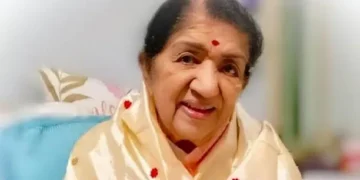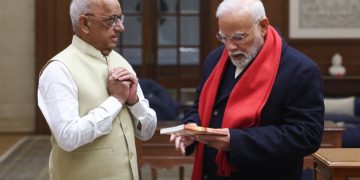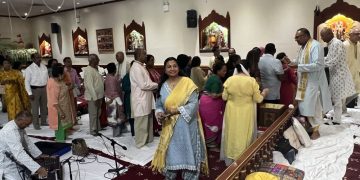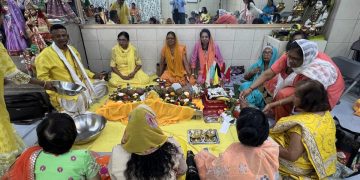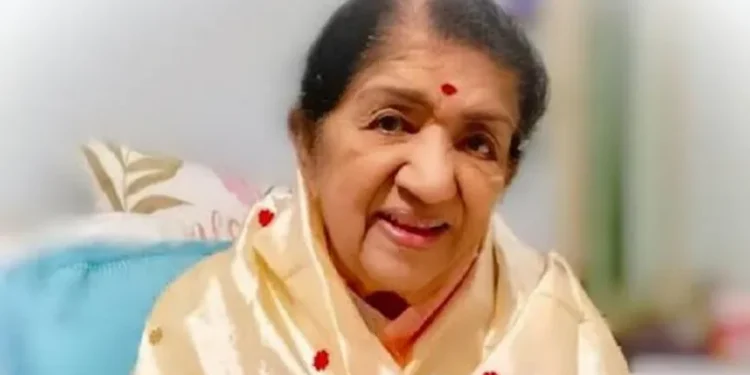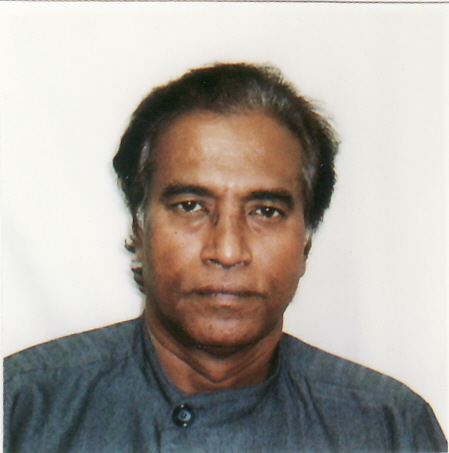Trinidad Author Felicitates Lata Mangeshkar; pays glowing tribute at program by
National Council of Indian Culture dedicated to her on evening of
Saturday 5th March 2022
Lata Mangeshkar was born in 1929 just three years before sound came to Indian movies in 1931 with Alam Ara. Between 1942-1947 she did short stints as an actress in Marathi films butauditioned as a singer for Bombay Hindi films when the family moved to Mumbai in 1947. In earlier days actors and actresses sang their pieces live on stage during filming. Some of those actors and actresses included Surendra, Noor Jahan andShamshad Begum among others. The female singers sang with a somewhat husky, heavy, nasal tone and people came to love them as the top singers of the day so when in 1947 Lataauditioned as a playback singer for Indian movies she was told several times that her voice was too thin and high-pitched and producers did not want to take a chance with a new singer withan entirely different tone.
One man, Gulam Haidar, believed in her ability to sing and thought that she had a bright future in the Mumbai film industry.After Lata was rejected by producers in 1947 Gulam Haidar was so upset with his comrades that he remarked “in time to come producers and music directors would be lining up to get Lata tosing in their movies.”
Haidar stuck with her and in 1948 gave her a break in his film Majboor and she became an instant hit. Within a year she dismantled the filmi castles of Shamshad Begum, Nur Jahan and others with super Lata singing in movies such as Mahal, Dulari, Barsaat, and Andaaz all released in 1949. Her fine, silky voicebecame the new normal for the Indian film industry.
The song “Aayega Aanewala” (“The one who has to come will come”) from the film Mahal in 1948 was truly a superhit song. That song was a defining moment for the young Lata and wasthe catalyst for her remarkable career as a playback singer in the Indian film industry. She became an overnight sensation inBombay filmi world.
There was no turning back for her as she sang solos and duets with the top male singers of the time such as Mohammed Rafi, Mukesh, Talat Mehmood, Mahendra Kapoor among others. She enjoyed superstardom as a playback singer for the next five decades in the Indian film industry pushing aside all competitors. She is unique in the annals of Indian cinema/Bollywood having sung more than nine thousand songs in thirty-six languages.
Impact on the Indian Diaspora
As she gained stardom and Indian movies spread throughout the Indian Diaspora, she became the voice of the airwaves not only in India but across the entire Indian Diaspora in countries such as Fiji, Mauritius, South Africa, Trinidad and Tobago, Guyana, Suriname, USA, Canada, UK and gave scintillating performances in most of those destinations. She was the first Indian singer to perform at the Royal Albert Hall in London in 1974, paving the way for others from the Indian film industry to follow.
Men women and children in the Indian Diaspora hummed her songs daily, often becoming great bathroom singers. Female singers from the Diaspora sought to imitate her voice and became popular singers in their own domains imitating the indomitable fine silky voice of Lata Mangeshkar as they performed with their local Indian orchestras and bhajan groups, each trying to sound as close as possible to the original voice of Lata Mangeshkar. That spawned several competitions entitled“Lata Mangeshkar imitation singing contest” several of which were held right here in Trinidad, and in particular at the NCIC here with singers trying to imitate the silken, fine refined voice of the Indian Nightingale.
For Indian Diaspora Indians, Lata Mangeshkar’s voice was a strong identity symbol, and they looked forward to hearing it on radio, television, at weddings, and at public engagements where her voice became a strong bonding agent wherever they gathered.
Lata’s repertoire of songs crossed several barriers as she was able to sing for any actress, for any mood whether it was happy, sad, festive, melancholy otherwise. She had such voice control that she could move from a very low pitch to an extremely high pitch in seconds without batting an eyelid.
• One of the highlights of her career was in 1963, just after the Sino- Indian war, when she sang “Aye Mere Watan ki logo” (“O’ people of my country”) for Indian Republic Day celebrations. President S. Radhakrishnan and Prime Minister Jawaharlal Nehru attended the performance which was just two months after the end of the war. Lata sang with such emotions that her performance of the song brought Prime Minister Nehru to tears.
• The period from the 1950s to the 1960s can be termed the golden years of Indian cinema and during this time shesang some of the greatest hits, too many to mention herebut you will hear some of them tonight.
Accolades
in recognition of her contribution to the Indian film industry Lata Mangeshkar received
• 1969 – Padma Bhushan
• 1989 – Dada Saheb Phalke Award
• 1999 – Padma Vibhushan
• 2001 – Bharat Ratna
• 2008 – “One Time Award for Lifetime Achievement” honour to commemorate the 60th anniversary of India’s independence.
• In 2009, Mangeshkar was awarded the title of Officer of the French Legion of Honour, France’s highest order.
• Three l honorary doctorates
• three National Film Awards,
• 15 Bengali Film Journalists’ Association Awards,
• four Filmfare Best Female Playback Awards,
• two Filmfare Special Awards,
• Dada Saheb Palki Filmfare Lifetime Achievement Award,
•
• She is widely one of the greatest and most influential singers in India and was often referred to as the Nightingale of India, the voice of the millennium, and the Queen of Bollywood melody.
On February 06, 2022, she breathed her last on earth but her memory will live on in her songs, tributes (such as this one today), and the various awards instituted in her name in various states and the Indian Diaspora. Perhaps, soon in TNT, we might see a return of the Lata Mangeshkar imitation singing competition with the trophy being the Lata Mangeshkar trophy.
• By 2011 was estimated that she had recorded just over 9000songs in 36 languages.
• It is estimated that at her passing she had a net worth of over US 16 million just over 100 million TT dollars.
• On the passing and 6 February 2022, the government of India announced two days of mourning in recognition of Lata Mangeshkar and her contribution to the nation.
By Primnath Gooptar
